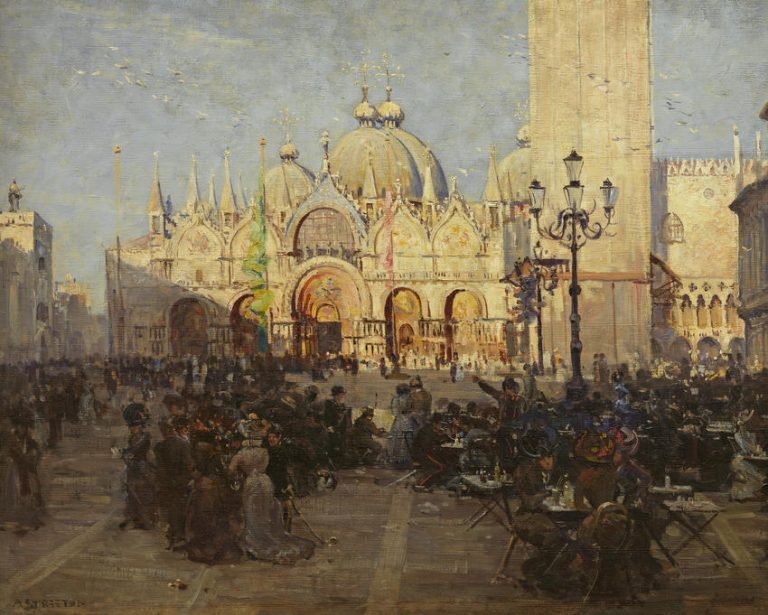We acknowledge the Traditional Owners of the land on which the Queensland Art Gallery | Gallery of Modern Art stands and recognise the creative contribution First Australians make to the art and culture of this country.

Arthur Streeton / Australia 1867–1943 / St Mark’s, Venice 1908 / Oil on canvas / 81.2 x 101.7cm / Purchased 1972 / Collection: Queensland Art Gallery | Gallery of Modern Art
Arthur StreetonSt Mark’s, Venice 1908
Not Currently on Display
Arthur Streeton is best known as one of the group of painters, including Charles Conder, Frederick McCubbin and Tom Roberts, who transformed Australian landscape painting in the 1880s. The success of Streeton’s first solo exhibition in Melbourne in 1896 enabled him to travel to London to further his career.
He spent the majority of the years up to 1923 in Europe, but critical success did not come as easily for him as it did at home. In April and again in September 1908, he worked in Venice, where this depiction of the city’s famous square was painted.
Inspired by the intense sunlight of the Mediterranean, Streeton worked prolifically, producing numerous oils, watercolours and a series of pencil-and-wash sketches. The Venice works show Streeton’s ability to capture the atmosphere and shimmering light of the city.
Arthur Streeton was born in 1867 near Geelong, Victoria. His family moved to Melbourne, and from 1882 to 1888 Streeton attended evening classes at the National Gallery of Victoria School of Design, where he participated in plein-air painting excursions to Heidelberg.
Streeton joined artists’ camps at Box Hill and Eaglemont in the late 1880s, together with Tom Roberts, Frederick McCubbin and Charles Conder. In about 1897, he sailed for Europe, spending time in Cairo and Italy before settling in London in 1899.
Streeton took pride in the grandeur of Australian nature, but his English experience led to an unimaginative style, quite different from his early Australian landscapes which are full of vitality, colour and light. In the 1920s, he returned to Melbourne where he lived until his death in 1943.
Discussion Questions
1. What do the shadows in Streeton’s painting reveal about the time of day captured in this scene? Think about the quality of light in public spaces — e.g. King George Square in Brisbane, or your local park. What are some of the forms, colours and effects created by light and shadow?
2. Identify the contextual clues which allow viewers to determine the mood and the location of this painting.
Classroom Activities
What is your favourite memory related to a public outdoor space? Using performance or monologue, convey the feelings you experience when you recall this memory.